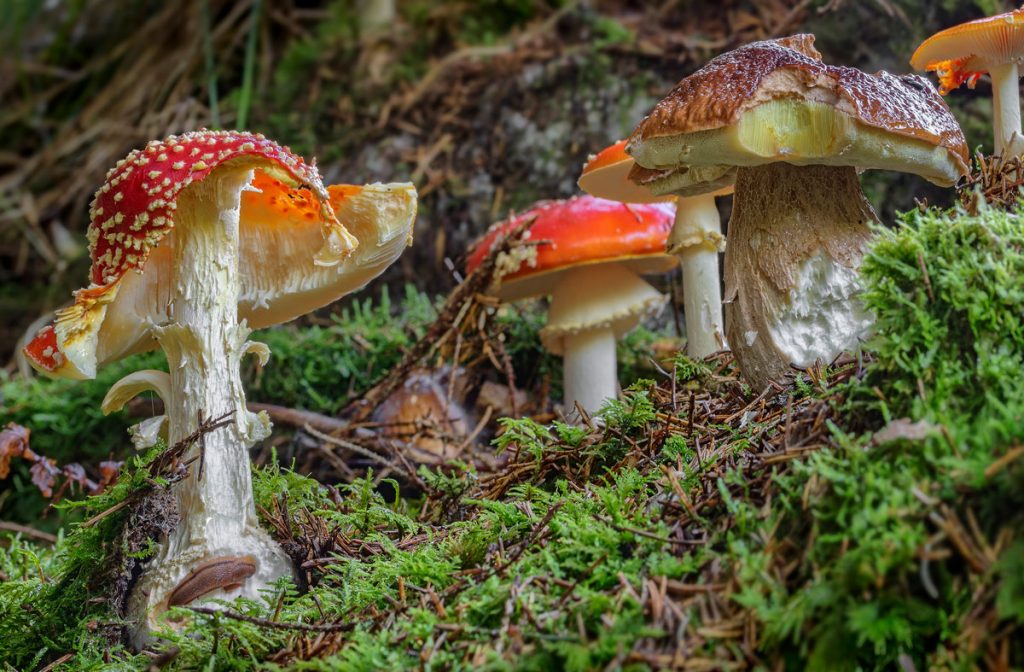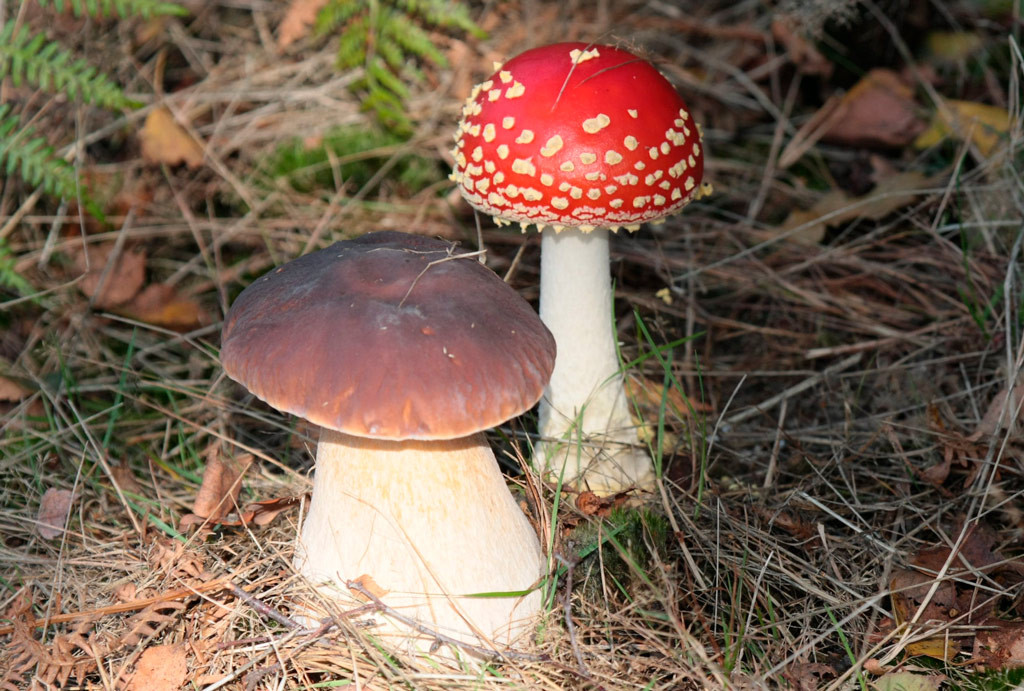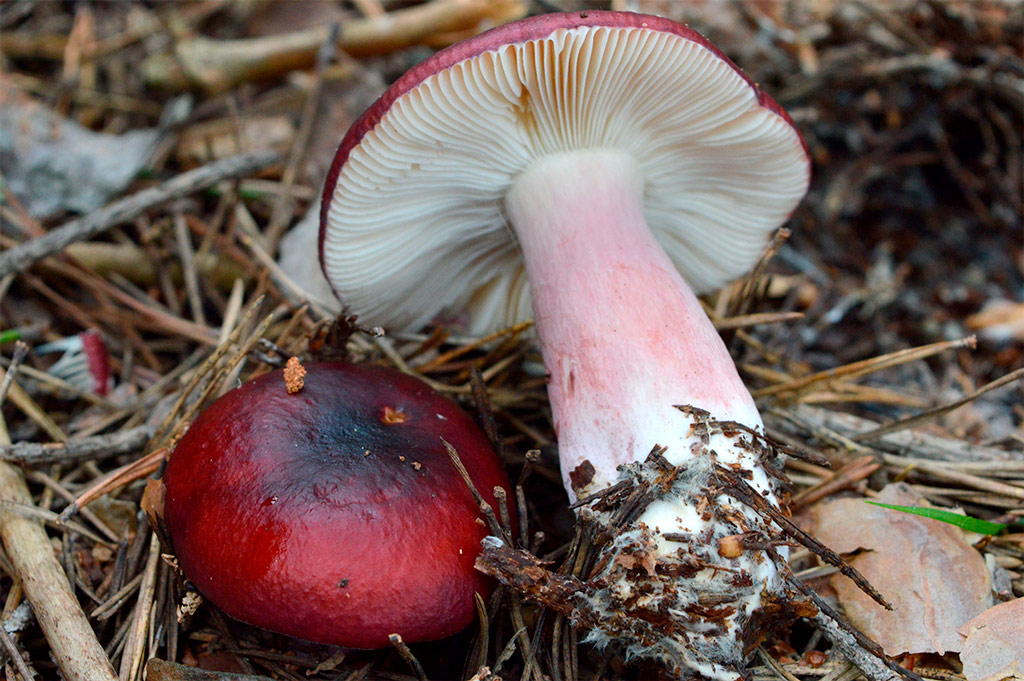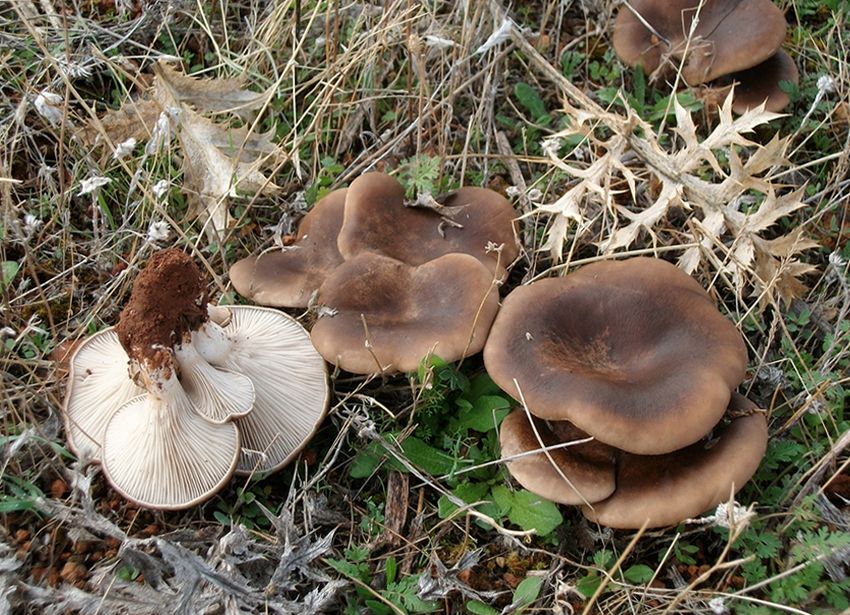Spotted mushrooms: a foraging aid for boletes
3 years ago · Updated 6 months ago

Indicator fungi: discovering the signals of other species
Mushrooms have always held a special fascination for mycology enthusiasts. Searching for and collecting mushrooms is an adventure in itself, but it can sometimes be difficult to find the species you are looking for. Fortunately, there are indicator mushrooms that give us clues about the presence of other species in the same environment.
We love being able to offer you information and special products for mushroom hunting, so in this article, we'll tell you about indicator fungi and how they can help you find your favorite mushrooms.
Indicator mushrooms for boletus mushrooms

Amanita muscaria and Boletus
One of the best-known associations is that of Boletus edulis and Amanita muscaria. The two mushrooms share the same habitat, as they grow on acidic soils. If you find Amanita muscaria in one place, it is very likely that Boletus edulis will appear there sooner or later. However, you should bear in mind that the period of appearance may vary, so it is possible to find many fly agaric mushrooms but few or no boletus mushrooms.
Molinera, Clitopulus prunulus, boletus mushrooms are nearby
Now, here is the foolproof tip we are going to reveal to you. The true indicator of Boletus edulis is a small, inconspicuous mushroom called Clitopilus prunulus, also known as Molinera. Although it has a high gastronomic value, it is not recommended for beginners to harvest it. This mushroom shares everything with Boletus edulis: habitat in acidic soils, same appearance period, and same environmental conditions. Therefore, if you find a Clitopilus prunulus, it is very likely that you have a Boletus edulis nearby.

How to recognize Clitopilus prunulus?
This mushroom is edible, but it is important to be cautious due to its resemblance to other white mushrooms of the Clitocybe genus, many of which are dangerous.
To identify it, there are two fundamental characteristics: its smell of fresh flour, similar to that of the morel mushroom (Calocybe gambosa), and its pink spores, visible on more mature specimens.The chivatas of the delicious milk cap mushroom
The Russula torulosa often appears in the same areas where delicious milk cap mushrooms grow. There is even a popular Castilian saying about this mushroom: “Seta morada, cerca de la niscalada” (Purple mushroom, near the milk cap mushroom). The same goes for earthy tricholomas. If you find them, sharpen your eyes and slow down, the delicious milk caps are nearby.
Sarcosphera crassa also signals the imminent appearance of milk caps. This curious mushroom grows half buried and, as it develops, opens up into a star shape.
There are many indicator mushrooms
Other mushroom combinations we may find are Clitocybe nebularis with Boletus edulis or Amanita caesarea with Boletus aereus. Along with the marzuolo, it is easy to see specimens of Entoloma hirtipes (although this one is not edible). These are mushrooms that we usually find together in the wicker baskets of mushroom pickers.
However, these associations may be due more to coincidences of climatic or soil factors. Unlike morels, these mushrooms will not necessarily be close to each other. The area where we are will greatly influence the appearance of mushrooms, which is why experience is the best ally for learning about morels.
Going out into the forest regularly will help us to see how it develops and which species of mushrooms appear depending on the season, habitat, or weather conditions
Morels, a great help in the forest
Another example of an indicator mushroom is Xerocomus subtomentosus, which is often found near Boletus edulis in beech forests. Each region may have its own indicator mushroom, such as the “molinera” in the Basque Country and the xerocomus in Castile and León. It is interesting to observe these associations and use them as a reference, but it is always important to have solid knowledge and take precautions when picking mushrooms.
Indicator plants and trees
In addition to helping us find mushrooms, these fungal species play a fundamental role in forest ecosystems. Many mushrooms establish a symbiotic relationship with trees, through which they exchange substances that make them more resistant to disease and climate change. This association is known as mycorrhization and is beneficial to both mushrooms and trees.
If we understand the relationship between edible fungi and plants, we will know where to look for boletes or Caesar's mushrooms. Some examples: delicious milk mushrooms are associated with pine trees, truffles with holm oaks and oaks, rockroses are an excellent habitat for boletus mushrooms, and if we see hawthorns or wild apple trees, we are likely to find perrechicos (mushrooms) nearby.
Another of the best-known associations is oyster mushrooms and sea holly. Without the presence of this plant, Eryngium campestre, we won't find Pleurotus eryngii.
Mycorrhiza, interaction between plants and fungi
Taking advantage of this symbiotic relationship, techniques have been developed to produce mycorrhizal trees, i.e., trees that establish mycorrhiza with beneficial fungi. These trees have a greater capacity to absorb nutrients and water and are protected from other harmful fungi, bacteria, and insects that attack the roots.
Grow mycorrhizal trees and create your own mycological garden
If you are interested in growing your own mycorrhizal trees, there are some important aspects to consider. These trees should be planted in shallow soil and it is recommended to add a mycorrhizal substrate to the planting hole. In addition, it is essential to ensure moisture and protect the roots from the sun and drying out.
Watering is also fundamental, especially during the hottest periods of the year. In humid soils, it is important to avoid covering the root collar with soil to prevent excess moisture, while in dry soils, a basin can be dug to make better use of the water.
In conclusion, “chivata” mushrooms can be valuable allies in the search for our favorite mushrooms. Thanks to their signals, they indicate the presence of other species in the same environment. However, it is essential to have solid knowledge and take precautions when picking mushrooms, as some species can be poisonous or confused with other dangerous ones. Furthermore, taking advantage of the symbiotic relationship between mushrooms and trees through mycorrhization can be an interesting way to contribute to the maintenance of forest ecosystems.
Tips for mushroom hunting
In addition to “chivatas,” there are other methods and techniques to improve mushroom hunting and picking. Here are some useful tips for searching for mushrooms:
- Know the habitat and preferences of the species: Each mushroom has its own preferences in terms of soil type, climate, and associated trees. Researching and familiarizing yourself with the specific habitats of the mushrooms you want to find will help you know where to look.
- Observe the environment: Pay attention to details in the natural environment. Observe the trees present, the surrounding vegetation, soil moisture, and other environmental factors. These can be indicators of the presence of certain mushroom species.
- Be patient and consistent: Mushroom hunting can take time and require patience. Some mushrooms can be elusive and only appear at certain times of the year. Don't get discouraged and keep a consistent attitude when you're out in the field.
- Join mycology groups: Participating in mycology groups or mushroom enthusiasts' associations will allow you to learn from experienced people and share your knowledge.
These groups usually organize outings and activities related to mycology.- Respect the environment and local regulations: Remember that mushroom picking should be done responsibly and in accordance with local regulations. Avoid picking mushrooms in protected areas or where it is prohibited, and do not pull mushrooms out by the root, as this can damage the mycelium and affect future regeneration.
Remember that picking and eating wild mushrooms carries risks, so it is important to acquire solid knowledge and ensure proper identification before consuming them. It is always recommended to consult experts or professionals in mycology for accurate information and to ensure safety.
Enjoy the fascinating adventure of mycology and the world of mushrooms!



Te pueden interesar